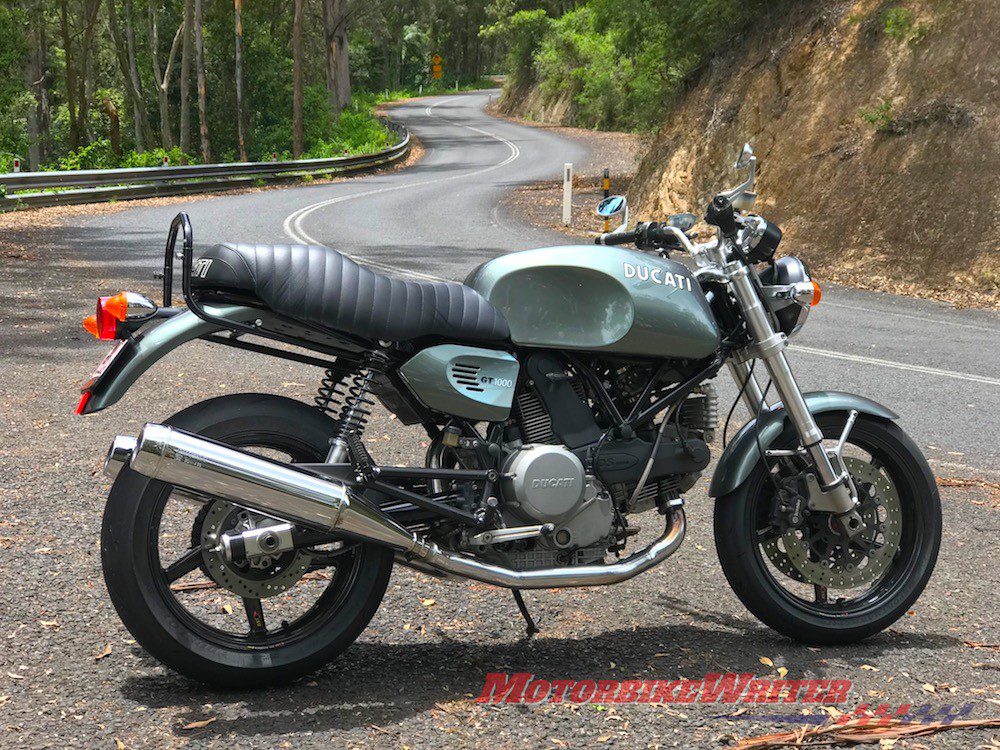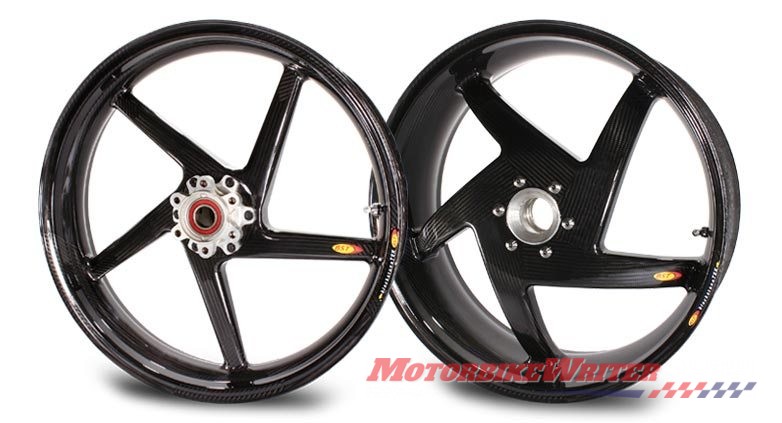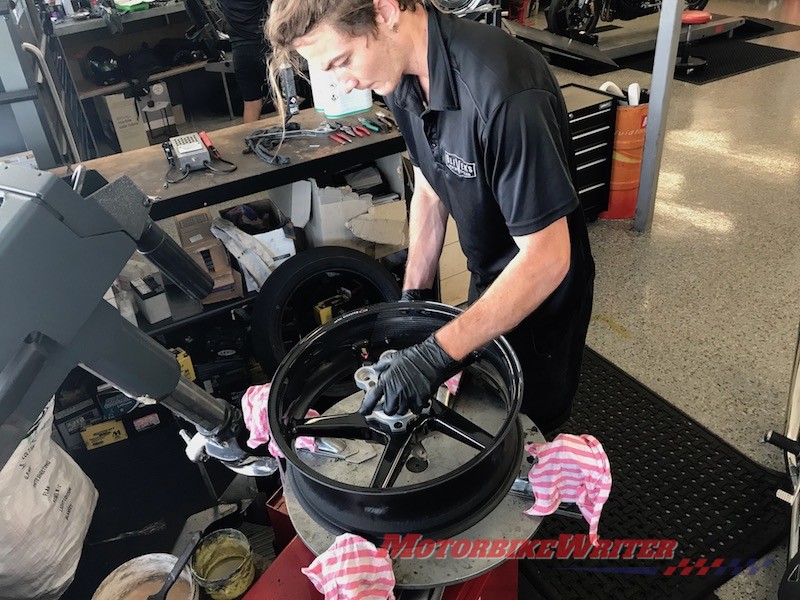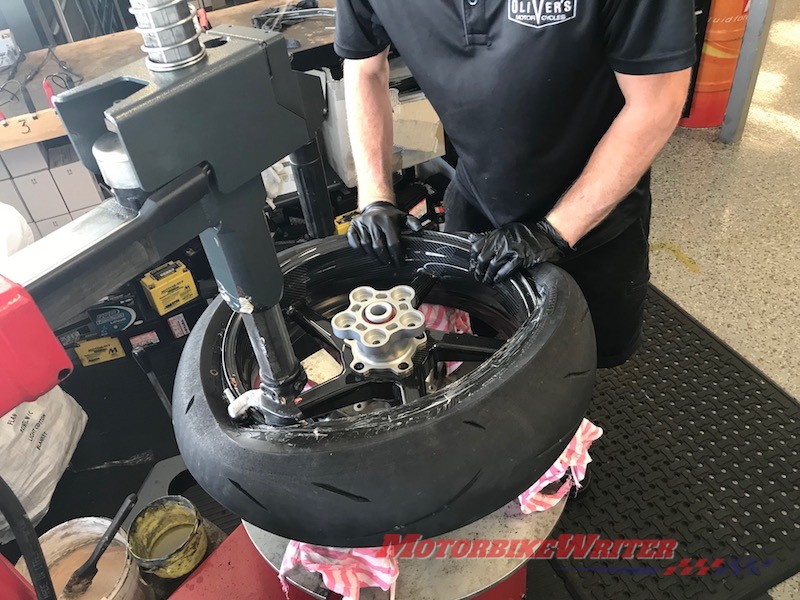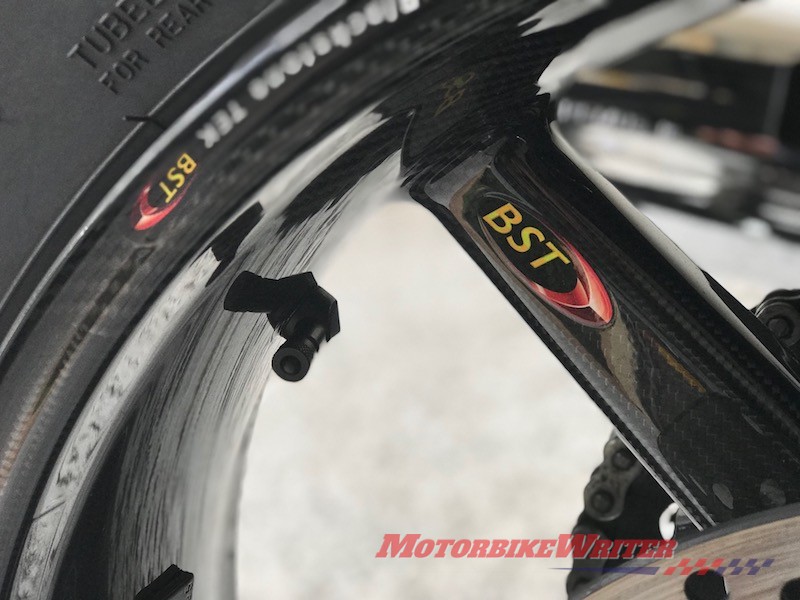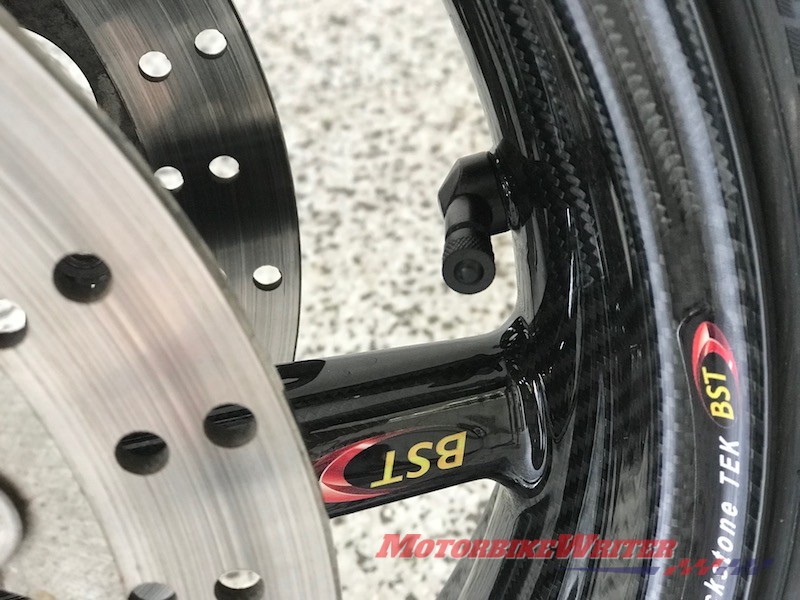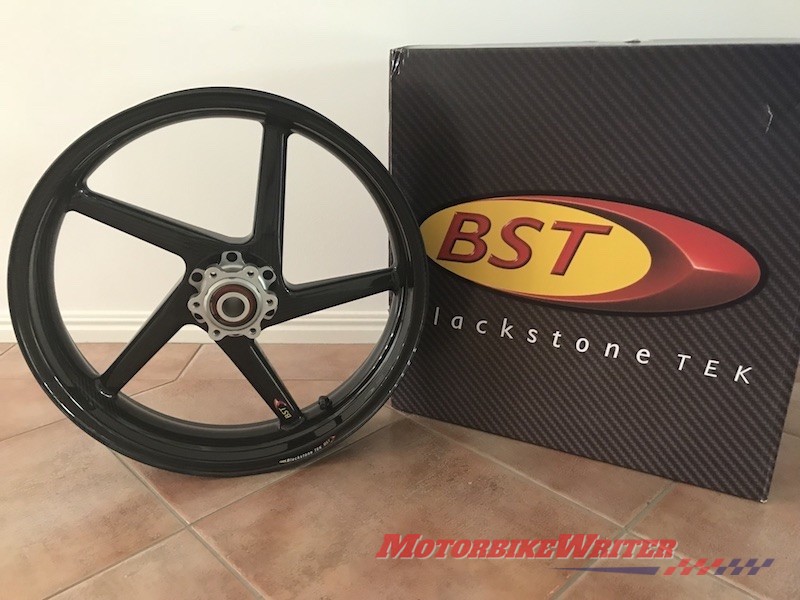There is a lot of hype about carbon wheels improving handling and braking, but do they really live up to that hype?
I’ve ridden many bikes with carbon wheels, but never been able to compare them back-to-back to a bike with heavier standard wheels.
Until now.
South African carbon manufacturer Blackstone TEK supplied a set of Black Diamond wheels for our 2006 Ducati GT1000 project bike.
The BST wheels weigh in at 3.2kg for the back and 2.4kg for the front.
That compares with the standard wire spoked wheels (discs and sprocket removed) at a whopping 10.5kg for the rear wheel and 6.8kg for the front.
That’s a 70% less on the rear wheel and 65% less up front for an total weight saving of 11.7kg!
Feel the hype
The difference in feel was immediate as I rode away from Oliver’s Motorcycles where they fitted the beautiful wheels using gloves and rags to protect them from any scratches.
My Ducati felt instantly lighter through the handlebars.
It tipped so deftly I had a little “moment” at the first turn when it tipped more than I expected.
Countersteering becomes such a feather-light experience and the bike responds instantly by tipping and changing direction.
After riding the bike through the hills, I can say that the carbon hype is warranted.
In fact, I’d say it is the single biggest change you can make to your bike’s performance.
Ride improved
Before fitting the wheels, I updated the suspension with Ikon shocks and progressive forks springs. Read my review here.
There was still some “jackhammer” effect through the bars and I was considering some valve work in the forks.
However, that harshness has now disappeared with the 65% lighter front wheel.
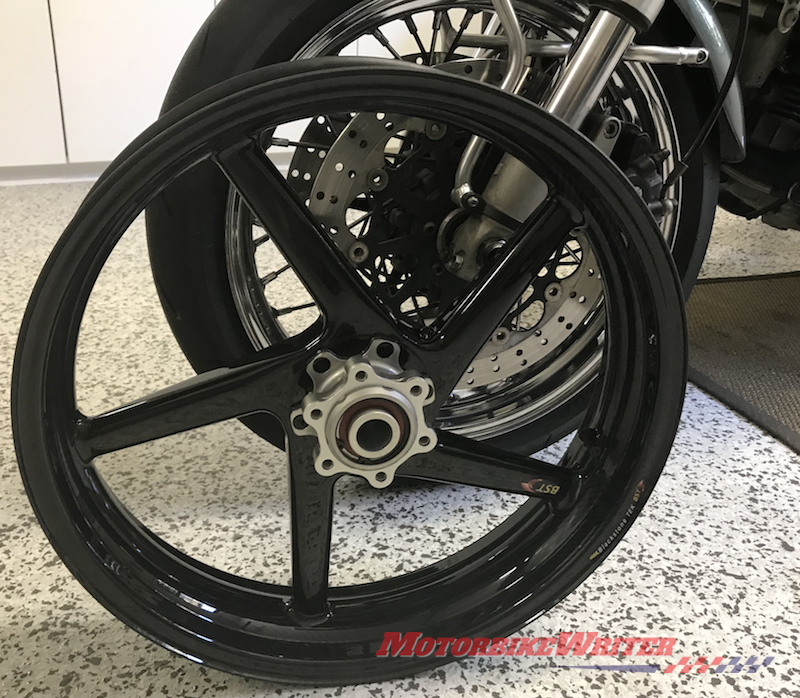
As an engineering friend of mine explains, the lightweight wheel means less unsprung weight and therefore not as much stress on the suspension.
On hitting a bump, the initial part of the compression stroke should be the same. However, there should not be as much impetus on either the compression or rebound strokes with the lighter wheel.
That means the suspension works quicker which prevents a pogoing effect and keeps the wheel on the ground for more mechanical grip. That helps with acceleration and braking.
Steering, braking and acceleration
The rotating mass of a heavy wheel makes it difficult to change direction. A lighter wheel is much easier to turn.
That means the steering is light and change of direction through a series of tight esses becomes quick and responsive to the lightest of counter steering input.
A light wheel will also start spinning and stop with less effort than a heavy wheel. Our tech Zac noticed this when he was spinning the wheel to balance it.
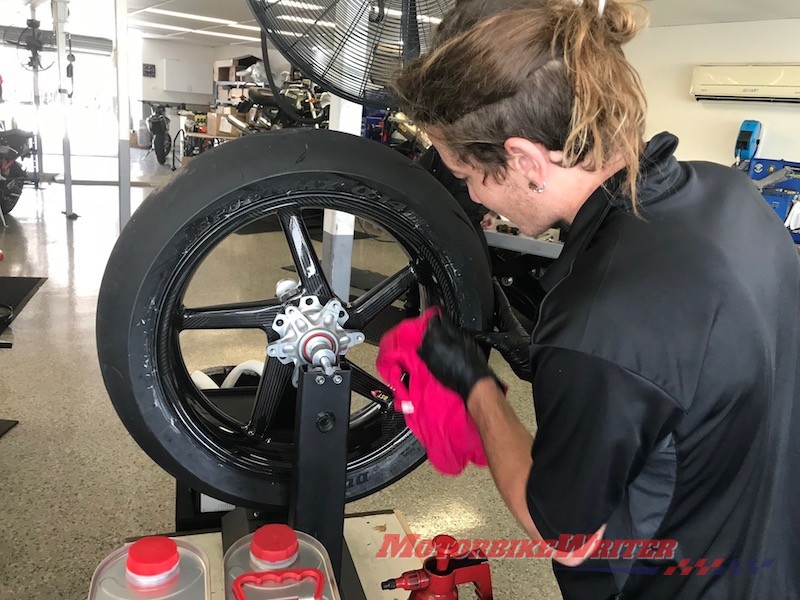
The ramifications should be faster acceleration, improved braking and slightly better fuel economy, especially in stop-start city traffic.
However, I wasn’t expecting the effects to be so dramatic.
The bike seems more responsive to the throttle. Together with the lighter front wheel this results in the only drawback of carbon wheels – wheelies!

While they are fun to execute, I found the bike wanted to wheelie over bumps in the first three gears, so I now have to weight the front wheel by moving forward in the saddle.
Braking is not only more effective, but also better controlled with a more sensitive feel in the levers.
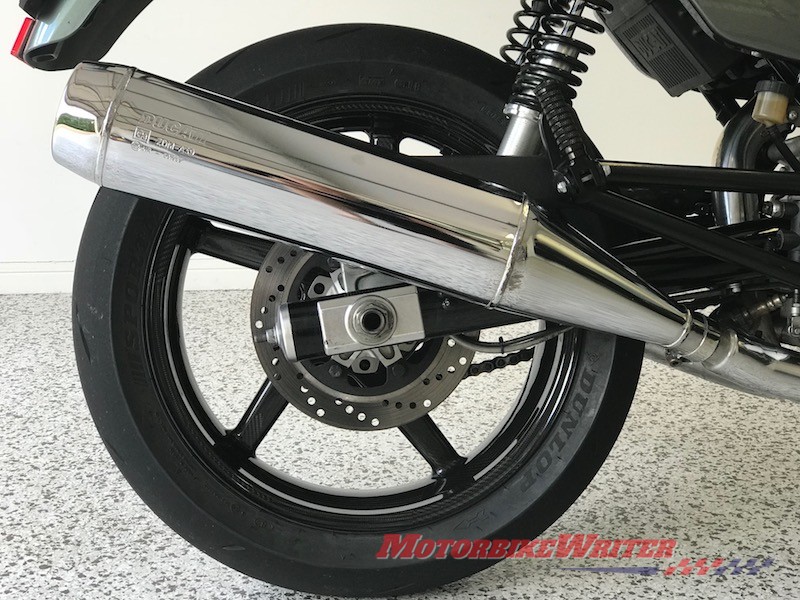
This makes trail braking with the rear brake much more controllable, even when wearing a big motorcycle boot.
There is also more initial bite through the front lever.
I haven’t noticed any difference in fuel economy. In fact, I probably won’t because I think I’ll be riding this harder!
Shattering experience
As for the hype about carbon wheels shattering on big impacts, I have not tested it and hope not to!
However, one rider has commented on the BST website about hitting a kerb head-on at 80km/h and surviving. Read their comments here.
Not only did the wheel not shatter, but the tyre held its air.
Styling up

I was conflicted about the styling of the wheels and losing the retro feel of the GT1000.
Most wire wheels on road bikes have a single disc on the right of the wheel so you can view the whole wheel when it is on its side stand. That’s all about style, not performance.
However, Ducati is performance oriented, so they fitted dual discs to the GT1000.
Unfortunately, it not only hides the beautiful spoked wheels, but makes them look cluttered.
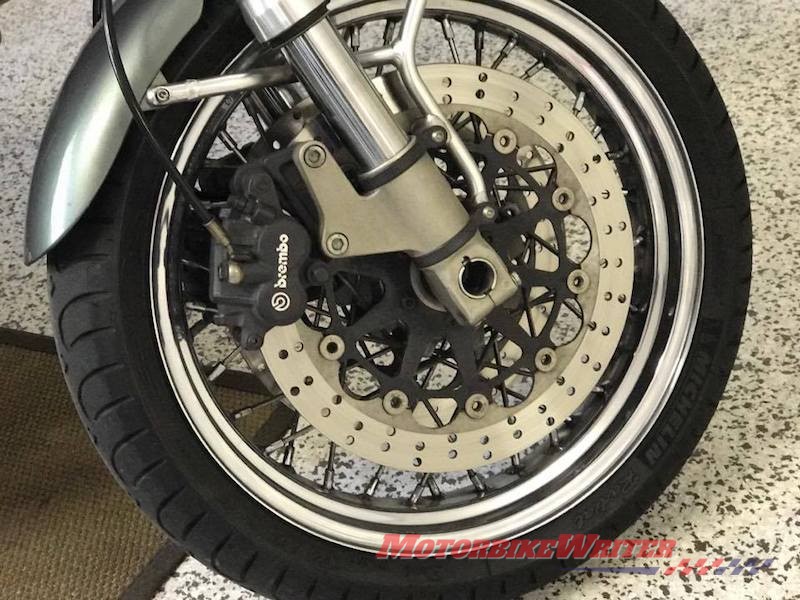
I think the BST carbon wheels actually clean up the look of the bike.
Ok, it’s not as retro, but I’m willing to forgo that for the improved performance.
Besides, carbon is to Ducati as chrome is to Harley!
I love the fact that the wheels come with horizontal valve stems for easy access.
It was previously impossible to use a conventional air hose with the gauge on the fitting. I had to go searching for those automatic air hoses with the smaller fitting which are not as accurate.
Another advantage of going from wire wheels to solid wheels is that I don’t need tubes.
The advantage of tubeless tyres is being able to quickly and cheaply fix a puncture on the side of the road.
These slanted five-spoke wheels are also much easier to wipe clean. The wire wheels were so difficult to clean that they were starting to develop rust where they spokes crossed over as it was difficult to access them with a rag or toothbrush.
There will also be no need to “tune” the spokes to keep the wheel a true circle.
If you love great great craftsmanship you’ll love these BST wheels.
When they first arrived they spent several days on the dining table where I could examine and admire them. They became a conversation piece with guests until Mrs MBW finally ordered them into the garage!
Conclusion
These carbon wheels cost $4100 plus fitting. That’s a lot to spend on any one motorcycle modification.
However, the benefits are so great and varied, affecting many aspects of the bike, that they are worth every cent.
Now for my Triumph Scrambler …
- Wheels supplied free by Blackstone TEK.


